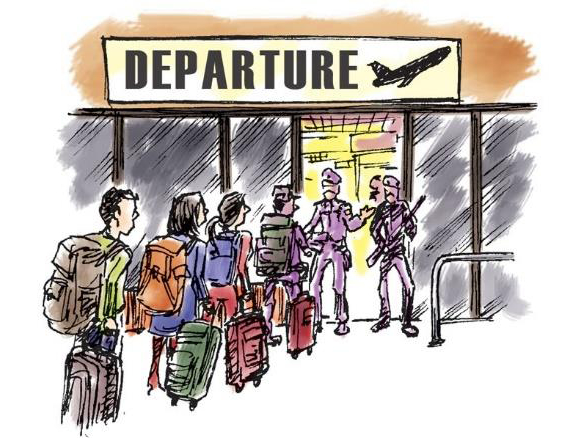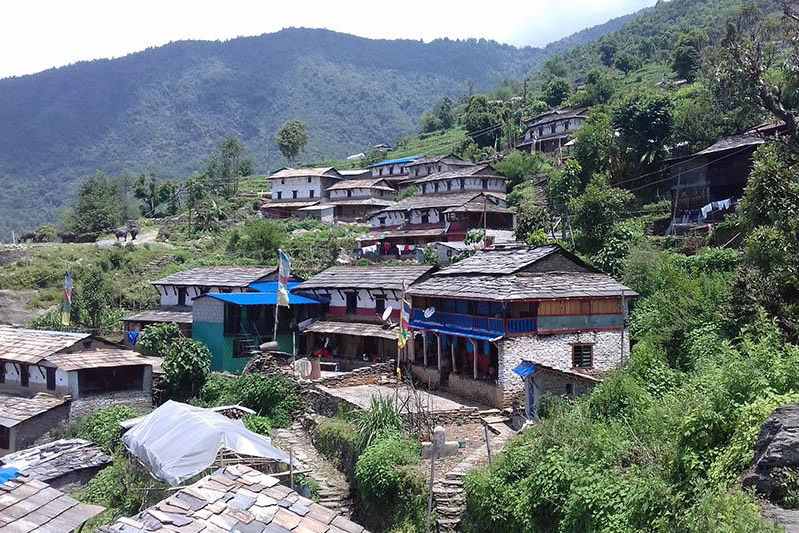
Opinion
12:15, 15-Apr-2019
My story: Belt and Road – Is it the way back home?
Nipil Sharma

Editor's Note: The second Belt and Road Forum for International Cooperation will be held in Beijing at the end of this month. Over the past six years, we have heard many voices – mostly political and economic ones – speak about the BRI. But we wanted to also hear from ordinary people who have experienced BRI for themselves. Over 100 people took part in our "CGTN Belt and Road Essay Contest," and we selected the 18 best stories. Here is an essay of one of our third-prize winners. The article reflects the author's opinions and not necessarily the views of CGTN.
"The first one to dance in your wedding and the first one to mourn your death is your neighbor." This famous Nepalese folk quote has defined the importance of a neighbor and how it can impact one's life. Similarly, in the case of my country Nepal, we have had a great fortune of having a good neighbor like China. After the Sino-Nepal Treaty of Peace and Friendship was signed on April 28, 1960, the two countries have had very healthy relations.
Since the Belt and Road Initiative (BRI) was announced by Chinese President Xi Jinping in 2013, it was welcomed with a great positive response by Nepalese people. The BRI has opened a plethora of opportunities for a developing country like Nepal through connection and development of infrastructure.
First, 35 projects were included in the proposal to be built under BRI, and now it has been zeroed in three road projects; two hydroelectricity projects; one cross-border railway; one cross-border transmission line and one technical institution under the name of the late Madan Bhandari, a communist leader. All of these projects are projects of national pride and would be a big milestone for the overall development of the country.
Nepal, although being profoundly rich with natural and cultural heritage, has not been able to flourish economically because of the tough geographical terrain, having no access to the sea and above all unstable political scenario of the country. Because of the lack of economic development, there are not many prospects of employment in the country.

Many Nepalese youths have to move abroad for better job opportunities. /Courtesy of Nipil Sharma
Many Nepalese youths have to move abroad for better job opportunities. /Courtesy of Nipil Sharma
Therefore, the youth has to go abroad for employment opportunities. This is the biggest problem in my country right now. About 15 percent of the total population is forced to work abroad at the very moment.
The biggest concern for youth in my country is where they shall move to get employed. This is a situation of every household. Every day the airport sees many heart-wrenching goodbyes, which may even be the last one because of the harsh working conditions in the gulf countries. Many of the kids grow up without having a glimpse of their father and mother. Many families cannot celebrate the festivals as they would like to with all the members.
A newlywed couple barely get to spend time together because one of them has gone back to work. A mother has to depend on video chat to wish her child a happy birthday. There is not any sort of good vibe in the villages because there are no people. Many of the historical places of human civilization have now been deserted. The places which once used to be full of joy and happiness are now just locked houses and graveyard of great memories. There is no substitute for a child missing their parents or a mother not able to see her children.
Under this circumstance, the BRI can open up a lot of opportunities in my country. For example, having a railway or a connection to the seaport will cut up the trade deficit by a lot which will eventually open up a lot of chances for economic prosperity through trade, tourism, investment, etc. If we can create employment opportunities in Nepal, then the working population will not have to move abroad.

An ancient village in Eastern Nepal which is now nearly abandoned. /Courtesy of Nipil Sharma
An ancient village in Eastern Nepal which is now nearly abandoned. /Courtesy of Nipil Sharma
The youth can work at home. A child can expect his parents to be waiting for him after school. A mother does not have to worry about the wellbeing of her children in some foreign soil because they are right beside her. Nepal shall thrive again with joy and prosperity.
Despite that all of us in the world belong to different races, ethnicities, and beliefs, there are some emotional characters that make us human. Achieving these goals through the BRI would not only make it successful from an economic point of view but much more than that.
Connectivity is the foremost goal of the BRI, but I think it's not just physical connectivity. It also places the connection of hearts, beliefs and the feeling of oneness amongst the people of the world. Challenges are surely on the way but it's through the solidarity of people of both countries that can make a lot of changes.
Therefore, the initiative is the way back home for my fellow Nepalese brothers and sisters as well as way home for prosperity. It's a boon that could make the Himalayas smile again. Exploring and exploiting vast potentials for development for shared prosperity is one of the few things that BRI can offer.
A road shall not only connect places but also culture and civilization. And an initiative shall not only join economies but also the hearts and minds of all the people in the world.
(The author is from Kathmandu, Nepal. If you want to contribute and have specific expertise, please contact us at opinions@cgtn.com.)

SITEMAP
Copyright © 2018 CGTN. Beijing ICP prepared NO.16065310-3
Copyright © 2018 CGTN. Beijing ICP prepared NO.16065310-3